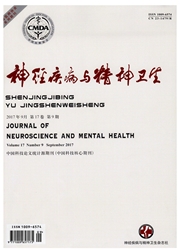

 中文摘要:
中文摘要:
神经突触具有高度可塑性,突触的形成和重塑是神经元活性依赖性的,是学习记忆、认知功能的基础。包括阿尔茨海默病(AD)在内的多种表现出认知缺陷的神经疾病。均存在突触结构或者功能的异常。AD病程缓慢,临床早期表现为单纯的记忆功能损伤,随病程深入,AD认知障碍进行性加重,并出现明显的神经退行性病变。其中新皮质、海马的联合区的突触密度下降,在AD的早期即出现,并且与认知功能下降呈现最显著的相关性。年龄似乎并不是突触丢失的促因。本文将回顾AD中突触损伤的相关研究,并讨论脑内神经连接下降后的可能代偿机制。
 英文摘要:
英文摘要:
Synapses are highly motile and can undergo remodeling even in the adult nervous system. Synapse remodeling and the formation of new synapses are activity--dependent processes that provide a basis for memory formation. Many neurological disorders accompanied by cognitive deficits exhibit abnormal synaptic function, including Alzheimer's disease (AD). AD is a progressive disorder, in its earliest clinical phase, characteristically produces a remarkably pure impairment of memory. Synaptic loss occurs early in the disease process and strongly correlates with the cognitive decline observed in AD. The synapse loss does not appear to be an inevitable consequence of the aging process. This article reviews the studies assessing AD--related synaptic loss and the possible compensatory changes in the synaptic complex that occur as a result of the loss in brain connectivity.
 同期刊论文项目
同期刊论文项目
 同项目期刊论文
同项目期刊论文
 期刊信息
期刊信息
